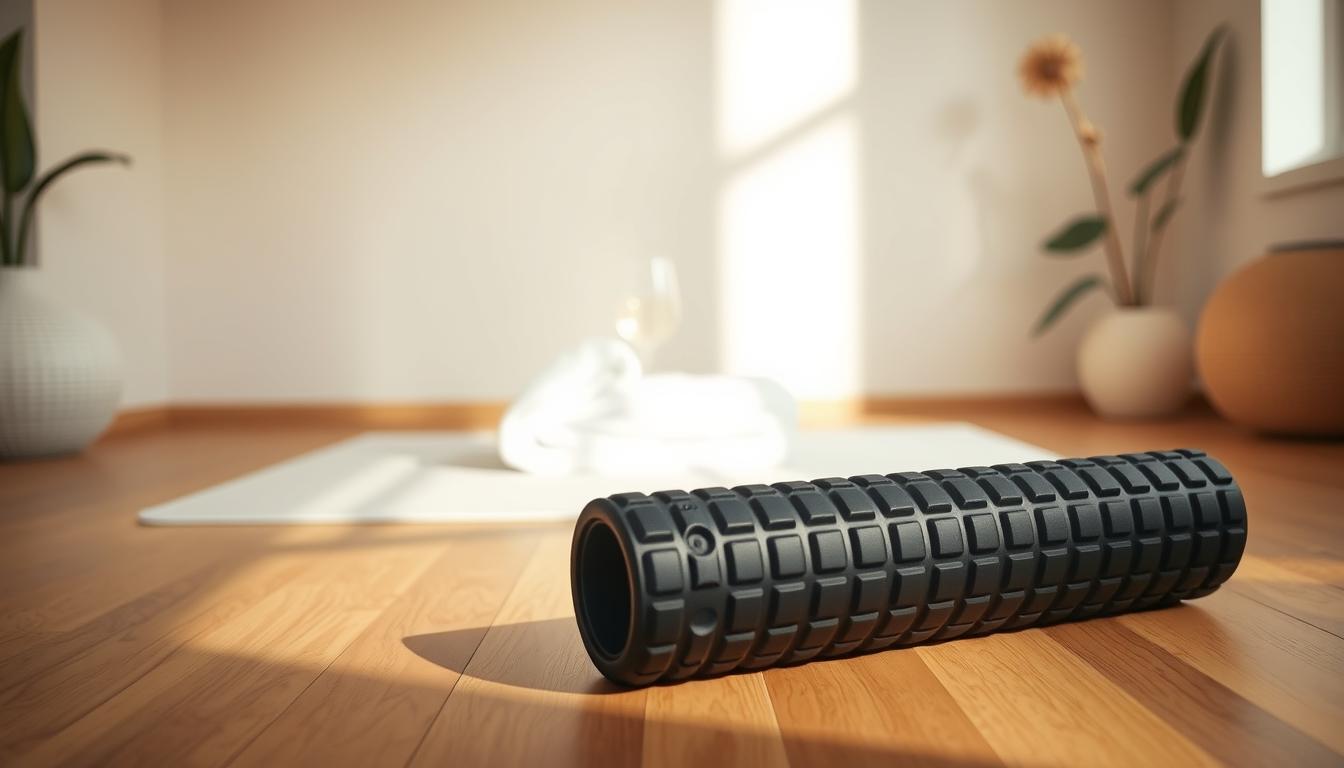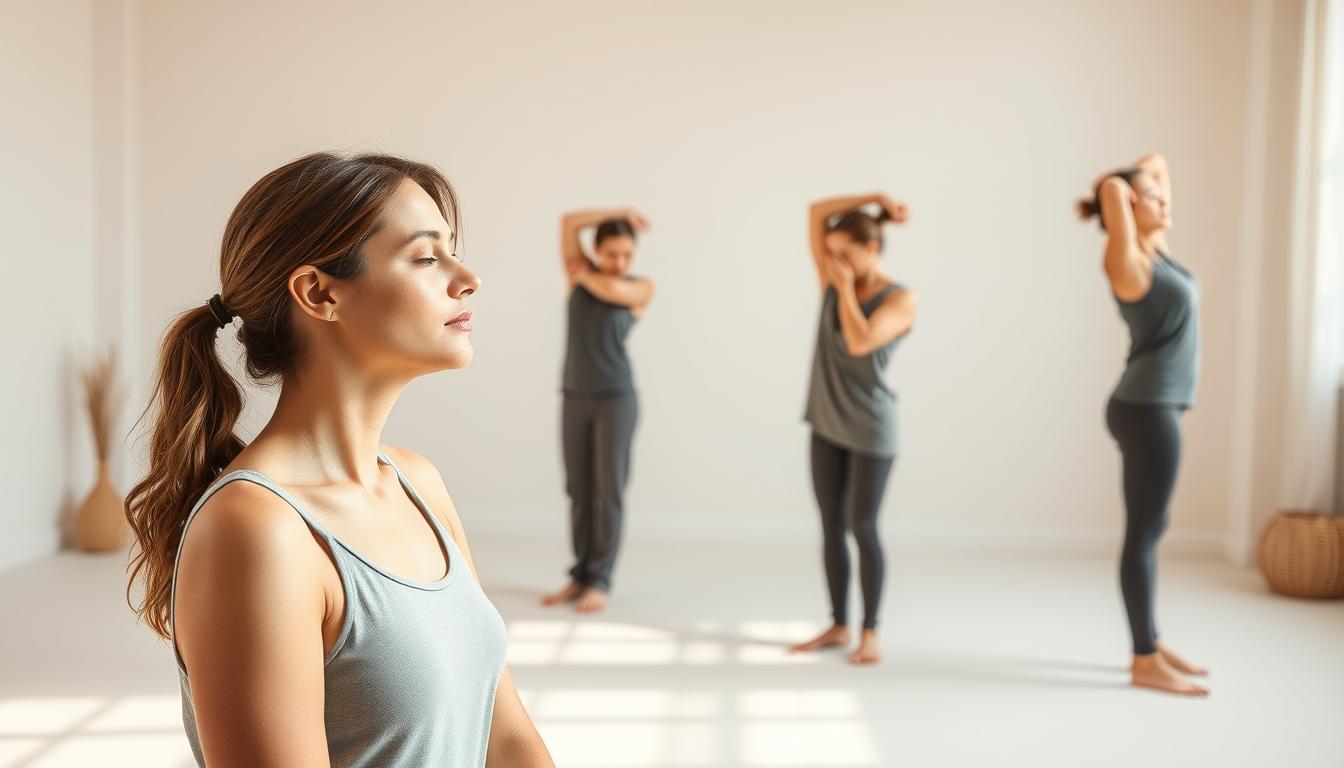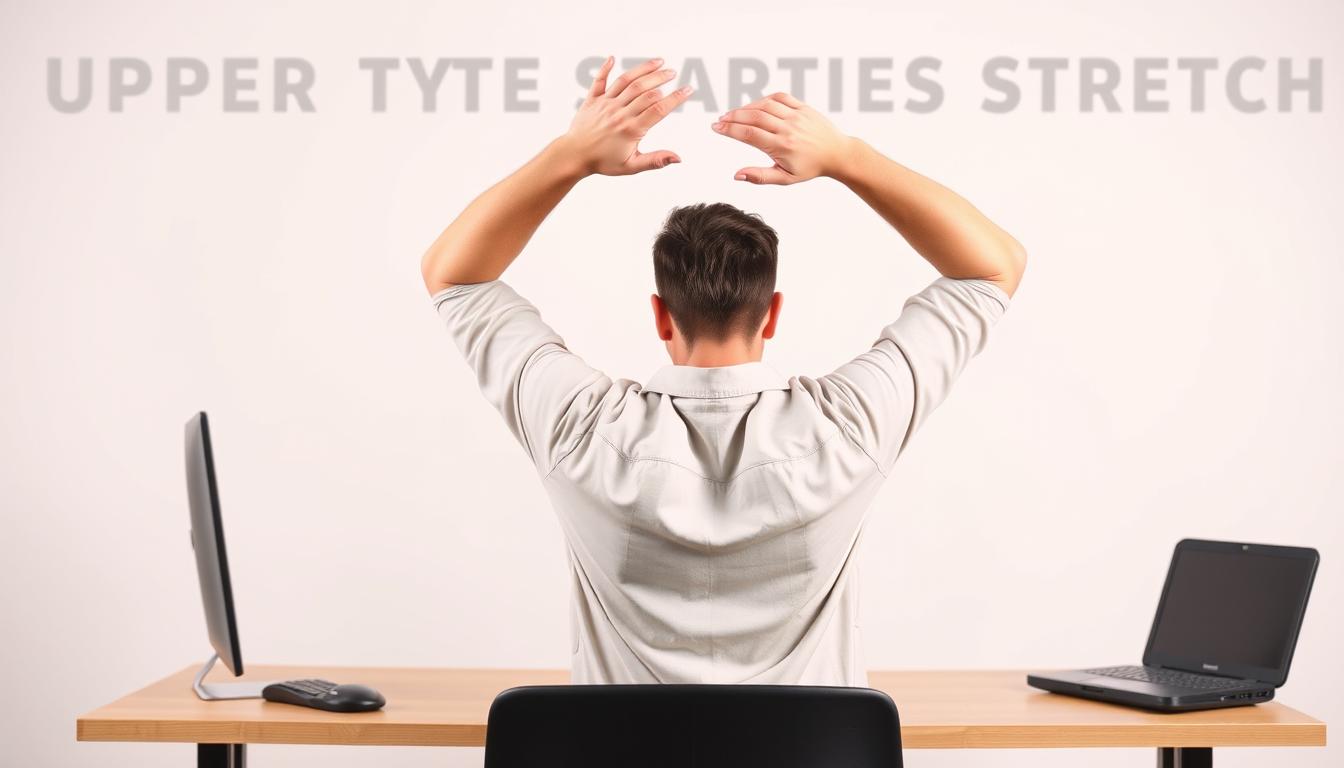Welcome to the ultimate guide for neck circles! This easy exercise helps relieve neck pain and boosts neck health. Learning the right way is key to get the most out of them and stay safe. We’re here to show you safe exercises to ease tension and make your neck more flexible. Follow our simple steps, and you’ll soon add neck circles to your daily activities for better health.
Understanding Neck Pain and Stiffness
Neck pain can come from many reasons that make your neck stiff and uncomfortable. Knowing the main causes of neck pain is key to solving the problem and improving neck health. We’ll look at these reasons, especially focusing on how everyday habits and posture can harm the neck.
Common Causes of Neck Pain
Several things can cause neck problems:
- Poor posture during long periods of sitting, like when using computers or smartphones.
- Muscle strain from sleeping in bad positions or pushing too hard during exercise.
- Getting older, which can cause wear and tear in the cervical spine.
- Mental stress leading to tight muscles.
Effects of Poor Posture on Neck Health
Bad posture over time can seriously harm neck health. Staying in the wrong position can lead to:
- More muscle tension and pain.
- Joint irritation and possible long-term damage.
- Constant neck stiffness because of not moving enough.
The Dangers of Traditional Neck Circles
Many people use neck circles to ease stiffness or discomfort. Yet, the dangers of these exercises are not well-known. Knowing how they work shows they can do more harm than good.
Why Full Neck Circles Can Cause Damage
Full neck circles mean rotating the head fully around. This stretch seems safe but can risk neck injury. Nerve compression during these movements can cause pain and tension.
Also, full neck circles strain neck muscles, worsening problems. For anyone with existing neck issues, these exercises might need a doctor’s visit.
Myths About the Benefits of Neck Circles
Some myths claim neck circles help everyone. However, the truth can be surprising. Despite beliefs that they aid in pain relief and flexibility, studies often disagree.
Sometimes, neck circles can make symptoms worse. Knowing the myths helps people make smarter neck health choices. It encourages the use of safer options.
How to Do Neck Circles Correctly
To do neck circles right, focus on safety and how you do them. Move slowly and with control, keeping a good posture. Gentle motions are key to making your neck more flexible but not hurt. Try different ways if you need to, to keep it safe and avoid hurting yourself.
Safe Techniques for Performing Neck Circles
For safe neck circles, follow these tips:
- Start by sitting or standing with a straight back, ensuring your shoulders are relaxed.
- Gently tilt your head forward, backward, and side to side to warm up your neck.
- Perform small circles, gradually increasing the range as your neck feels comfortable.
- Keep your movements fluid and avoid any sudden twists.
- Limit the number of repetitions to prevent overexertion.
Alternative Stretches to Consider
If neck circles aren’t right for you or you want to try something new, check out these alternatives:
- Gentle side tilts: Move your ear towards your shoulder while keeping the opposite shoulder down.
- Chin tucks: Pull your chin inward towards your neck, maintaining a straight back for better alignment.
- Shoulder rolls: Move your shoulders in circular motions to alleviate neck tension.
Effective Alternatives to Neck Circles
For people wanting to ease neck pain safely, there are good options. Two top picks are the head to shoulder stretch and the chin tuck exercise. They both help stretch and strengthen neck muscles safely.
Head to Shoulder Stretch Explained
This stretch is a gentle way to ease neck tension. Start by sitting or standing in a comfortable position. Then, lean your head towards one shoulder gently. This uses the weight of your head to stretch the opposite neck side. Stay in this pose for 15 to 30 seconds, breathing deeply. Do the same on the other side. This method stretches the neck and increases flexibility without harm.
Chin Tuck: A Safe Stretch for Neck Relief
The chin tuck helps relieve discomfort near the skull’s base. Begin in a seated or standing position, keeping your shoulders relaxed. Pull your chin towards your neck, but don’t tilt your head down. You’ll feel a soft yet effective pull. Hold this for a few seconds, then let go. Doing this regularly is great for neck posture and lessening strain. Adding these exercises to your daily routine aids in better neck care and health.
Improving Neck Flexibility and Strength
Improving neck flexibility and building up the muscles around it can really help lessen pain and boost how well you move. By doing special neck exercises, you can cut down on tightness and move more freely. It’s really important to keep up with these exercises to have a healthy neck, especially if you sit a lot or have bad posture.
Exercises for Neck Strengthening
To keep your neck healthy, it’s key to do exercises that make its muscles stronger. Here are some to add to your daily routine:
- Isometric Neck Exercises: Press your forehead into your hands without moving your head, and then do the same with the back of your head and your hands.
- Chin Tucks: Gently pull your chin towards your chest, hold it for a bit, then let go.
- Neck Side Bends: Slowly tilt your head to one side to try and touch your ear to your shoulder, then do the other side.
How Stretching Can Aid in Mobility
Adding stretches into your daily routine really helps make your neck more flexible. These stretches warm up your muscles and can keep injuries away. Try these for better movement:
- Rotational Stretches: Slowly turn your head from one side to the other, staying within a comfy range.
- Forward and Backward Stretch: Tilt your head down, chin to chest, then lean back to look up.
- Neck Rolls: Roll your head around in a circle smoothly, going from left to right.
Signs You Should Avoid Neck Circles
Knowing when to stop doing neck circles is key to keeping your neck safe. Some signs might mean there’s a bigger problem that needs a doctor’s look. Paying attention to these signs of neck pain can help you avoid further harm.
When to Consult a Physical Therapist
Feeling constant or very bad discomfort means it’s time to see a physical therapist. They can offer the right treatment and ways to prevent more issues, specifically for your situation. Avoid doing neck circles if you notice:
- Numbness in arms or hands
- Tingling sensations that persist
- Significant reduction in neck mobility
- Severe headaches associated with neck pain
Identifying Warning Signs of Serious Issues
It’s very important to be aware of the warning signs of neck pain. Be on the lookout for signals that could mean something more severe. These signs include:
- Sudden pain that feels different from previous discomfort
- Pain accompanied by dizziness or vision problems
- Constant pain that interrupts daily activities
- Weakness or difficulty using your arms
If you start to notice any of these symptoms, see a physical therapist quickly. Catching and treating these symptoms early can make a big difference in recovery.

Creating a Safe Neck Care Routine
Having a good neck care routine is key for keeping your neck healthy. By adding healthy neck habits to your daily life, you can avoid pain and feel better overall. Paying attention to your posture, staying hydrated, and exercising regularly are important to keep neck pain away.
Daily Practices for a Healthy Neck
- Make sure your workstation is set up right. Your chair, monitor, and keyboard should help keep your spine straight.
- Do stretching exercises every day that focus on your neck and shoulders. This makes you more flexible and eases tension.
- Take short breaks from sitting too long or from computer work. Moving around and stretching for a few minutes helps loosen you up.
- Be mindful of how you walk and sit so your neck stays in a good position.
Preventative Measures for Neck Pain
- Drink plenty of water to keep your muscles working right and avoid cramps.
- Add exercises that make your neck muscles stronger. This helps your neck support your head better.
- Use heat or cold therapy when needed. Heating pads or ice packs can calm neck pain.
- Think about using pillows that support your neck while you sleep. This helps keep your neck straight.
Expert Tips for Managing Neck Pain
To manage neck pain well, try using a mix of smart strategies and being mindful every day. By changing some lifestyle habits for your neck, you can see a big improvement in how your neck feels. Small changes and regular actions can make a big difference in bringing comfort and relief.
Lifestyle Changes to Enhance Neck Health
Follow these expert neck health tips for better neck care:
- Choose an ergonomic chair that supports you well when you sit for a while.
- Make time for breaks to stretch and move around, especially if you work or watch screens a lot.
- Add exercises that make your neck strong and flexible to your daily routine.
- Drink plenty of water to keep your muscles working well.
Postural Adjustments for Everyday Life
Making small posture changes can really help with neck pain:
- Keep your head straight, not leaning forward, when you sit or stand.
- Put your computer screen at or just below eye level to avoid straining your neck.
- Choose pillows that keep your neck lined up with your spine when you sleep.
- Try not to use your phone too much and hold it up higher to avoid bending your neck down.
Conclusion
We looked at why it’s important to know about neck pain and the risks of doing neck circles. We learned that neck circles might not be as good for us as we thought. Instead, doing safe neck exercises and other kinds of stretches can help keep our necks healthy in the long run.
By choosing the right strategies for neck pain relief and listening to our bodies, we can improve how we take care of our necks. It’s also key to know when it’s time to get help from a doctor or a professional for neck issues.
Mixing safe stretching methods with being aware of how our body feels lays the groundwork for keeping our necks pain-free and flexible. Keep these ideas in mind as you look after your neck safely.



